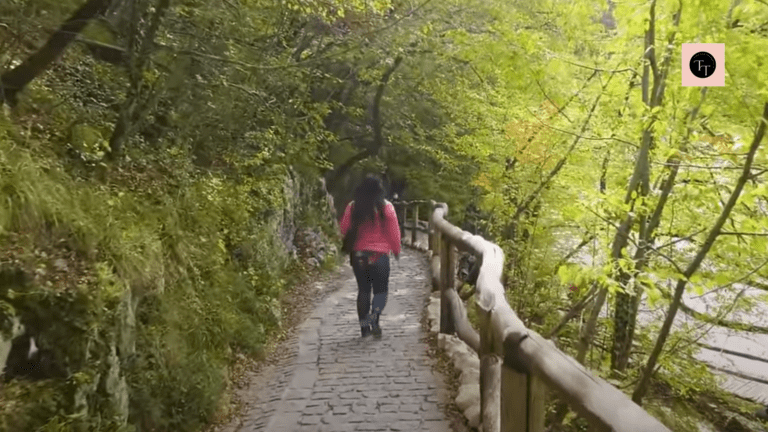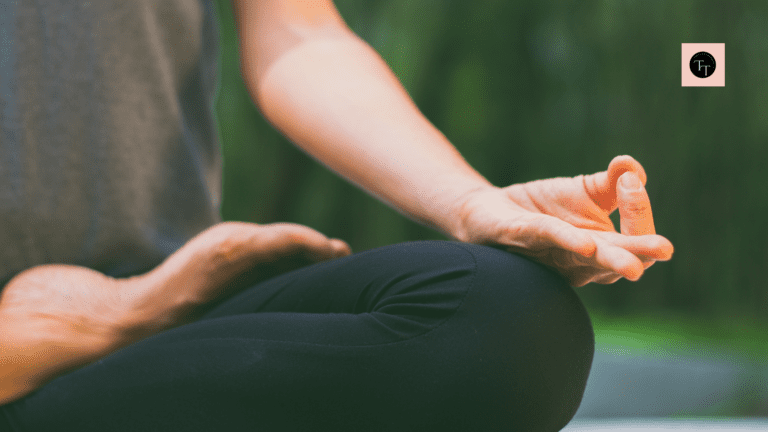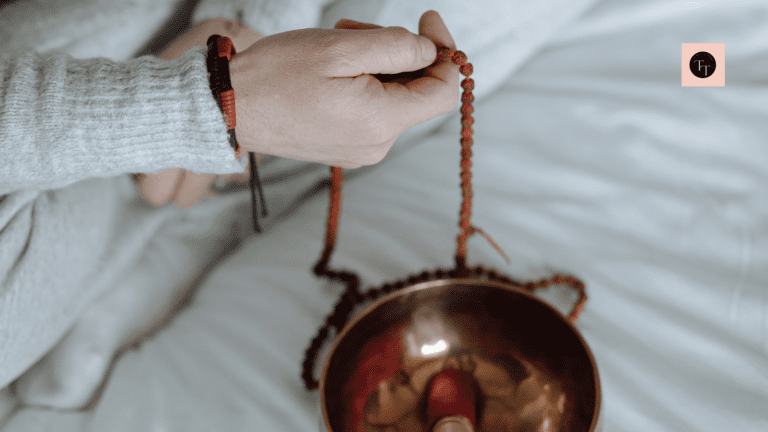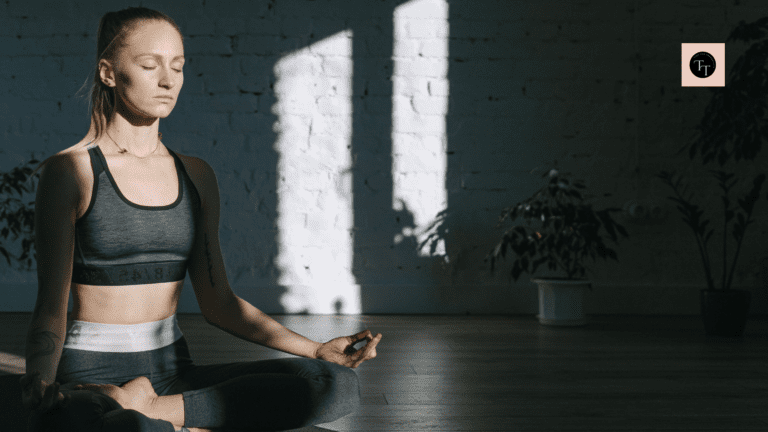Pranayama and Meditation: An Extraordinary Combination
Pranayama and Meditation are powerful practices that can help you achieve inner peace and self-awareness. Pranayama involves controlled breathing techniques that calm the mind and balance emotions. Meditation, on the other hand, focuses on mental awareness and achieving a state of inner calm.
I am aware that, often there is some confusion in the correct understanding of these two terms. In this article, I’ll explain:
- Each practice
- Highlight the differences
- Show you the benefits of each
- How they complement each other
So, let’s get started!
Understanding Pranayama
Pranayama is a practice of controlled breathing techniques rooted in ancient yogic traditions. The word “Pranayama” comes from Sanskrit, where “prana” means life force or breath, and “ayama” means control.
“Control of the breath is the key to controlling the mind.” — Swami Sivananda
By regulating our breath, we can influence our mind and body, achieving balance and harmony.
Disclaimer: Pranayama is an Yogic practice. Yoga should always be learned from an experienced teacher.
Benefits of Pranayama
The practice of Pranayama benefits our physical, mental, and spiritual well-being.
Physically, it improves lung capacity and oxygenates the body. Mentally, it calms the mind and reduces stress. Spiritually, it helps us connect with our inner self and enhances self-awareness.
Common Pranayama Techniques
While the basic concept behind Pranayama is controlled breathing, there are several different techniques. Here are some of the popular ones.
Nadi Shodhana (Alternate Nostril Breathing)
Nadi Shodhana, or Alternate Nostril Breathing (aka Anuloma Viloma), is a simple and possibly the most commonly practiced technique. It involves breathing through one nostril at a time while closing the other.
This practice balances the energy channels in the body, calms the mind, and promotes mental clarity. It’s an excellent technique for beginners and can be practiced daily.
The best way to practice this technique is in the early hours of the day and natural surroundings.
Ujjayi (Victorious Breath)
Ujjayi, also known as Victorious Breath, involves breathing deeply through the nose while slightly constricting the throat. This creates a soft, ocean-like sound.
Ujjayi helps increase oxygen intake, warms the body, and calms the nervous system. It’s often used during yoga asanas to maintain focus and rhythm.
Bhramari (Bee Breath)
Bhramari, or Bee Breath, is a calming technique that involves making a humming sound while exhaling. To practice Bhramari, sit comfortably, close your eyes, and gently cover your ears with your fingers. Inhale deeply, and as you exhale, make a humming sound like a bee.
This practice soothes the mind, reduces anxiety, and promotes relaxation. It’s particularly effective for relieving stress and tension.
Bhastrika (Bellows Breath)
Bhastrika, or Bellows Breath, is an energizing technique that involves rapid and forceful breathing. To practice Bhastrika, sit comfortably with your spine straight. Inhale deeply through your nose, then exhale forcefully, through your nose, using your diaphragm to push the air out.
Repeat this process rapidly for a few breaths, then return to normal breathing. Bhastrika increases oxygen supply, boosts energy levels, and clears the mind. It’s a powerful technique but should be learned and practiced under expert supervision.
Understanding Meditation
Meditation is a practice where you focus your mind and eliminate distractions to achieve a state of mental clarity and emotional calm. It has roots in various spiritual traditions, including Hinduism, Buddhism, and Zen.
These traditions have used meditation for centuries to cultivate inner peace, self-awareness, and spiritual awakening. Meditation is not just a spiritual practice; it is also a powerful tool for improving mental and physical well-being.
Benefits of Meditation
The regular practice of meditation benefits the body, mind, and spirit.
Physically, it can reduce stress, lower blood pressure, and improve sleep. Mentally, it enhances concentration, reduces anxiety, and promotes emotional health. Spiritually, meditation helps you connect with your inner self, fostering a sense of peace and purpose.
By incorporating meditation into your daily routine, you can experience a profound transformation in your overall well-being.
Common Meditation Techniques
Different societies and religions have developed different techniques for practicing meditation. While the end goal remains the same, the actual process differs.
Here are some of the popular techniques.
Mindfulness Meditation (Vipassana)
Mindfulness Meditation, (aka Vipassana), involves observing your breath without judgment. You focus on the sensation of breathing, noticing each inhale and exhale.
“Breath is the bridge which connects life to consciousness, which unites your body to your thoughts.” — Thich Nhat Hanh
The argument is that in meditation you need an object on which the mind can focus; and what better object than breath which is synonymous with life itself?
Bringing awareness to your breath, causes you to become more aware of your thoughts and feelings. You can understand and respond to them with clarity, calmness, and rationality.
Regular mindfulness meditation helps you develop a deeper sense of presence and awareness in your daily life.
Loving-Kindness Meditation (Metta)
Loving-Kindness Meditation, or Metta, involves cultivating compassion, love, and kindness toward yourself and others. You begin by focusing on yourself, silently repeating phrases like “May I be happy, may I be healthy, may I be safe.”
Gradually, you extend these wishes to others, including loved ones, acquaintances, and even those you may have conflicts with. This practice helps you develop a more compassionate and loving attitude, fostering positive relationships and emotional well-being.
Transcendental Meditation
Transcendental Meditation (TM) involves repeating a specific mantra to quiet the mind. You sit comfortably with your eyes closed and silently repeat the mantra.
This practice helps you transcend ordinary thought processes. It can, ultimately, lead to a state of deep relaxation and inner peace. TM is known for its simplicity and effectiveness in reducing stress and promoting mental clarity.
Zen Meditation (Zazen)
Zen Meditation, or Zazen, is a sitting meditation focused on breath and mind awareness. You sit, in a comfortable position, often cross-legged, and concentrate on your breath.
The goal is to observe your thoughts without attachment, allowing them to come and go naturally. Zazen helps you develop a deeper understanding of your mind and cultivate a sense of inner stillness and peace.
Sound Meditation
Sound Meditation uses sounds, such as gongs, singing bowls, or mantras, to aid concentration. You focus on the sound, allowing it to guide your meditation.
This practice can help you achieve a state of deep relaxation and mental clarity. Sound meditation is particularly effective if focusing on your breath or thoughts seems difficult.
Movement Meditation
Movement Meditation involves mindful movement and awareness of bodily sensations. Practices like Tai Chi, Qigong, and walking meditation fall under this category.
You focus on the movement of your body, paying attention to each sensation and motion. This practice helps you connect with your body and develop a sense of harmony between mind and body.
Movement meditation is an excellent option for those who can not sit still for extended periods. It has physical benefits as well.
You may try out some or all of these meditation techniques before you find the one that resonates most with you. Then incorporate it into your daily routine.
Each technique offers unique benefits. Any one of them will take you closer to your quest for self-discovery, tranquility, and happiness.
Pranayama and Meditation: What’s the Difference?
Pranayama: Focus on Breath Control
Pranayama is all about controlling your breath. By practicing different breathing techniques, you can influence your body and mind.
Pranayama makes you feel calmer and more centered. Pranayama improves lung capacity and oxygen intake, calms the mind, reduces stress, and deepens spiritual connection by enhancing self-awareness.
Meditation: Focus on Mental Awareness
Meditation, on the other hand, is about bringing conscious awareness to your thoughts and feelings. During meditation, you sit quietly and observe the thoughts as they arise without judgment.
Meditation reduces stress, lowers blood pressure, and improves sleep. It enhances concentration, reduces anxiety, and promotes emotional well-being. Spiritually, it fosters inner peace and a sense of purpose.
Complementary Practices
Pranayama and meditation work well together. Practicing pranayama first prepares your body and mind for meditation.
When you regulate your breath, you create a calm environment. This makes it easier to meditate.
When practiced together, pranayama and meditation enhance the overall experience, helping you achieve greater peace and tranquility.
Integrating Pranayama and Meditation into Your Daily Life
“When the breath wanders, the mind is unsteady, but when the breath is calmed, the mind too will be still.” — Hatha Yoga Pradipika
Integrating Pranayama and Meditation into your daily routine can help you find peace and purpose, especially if you feel anxious about the future. Here’s a gentle way to start:
1. Begin Small
Set aside just 5-10 minutes each morning. Find a quiet spot to sit, on floor cushions or a comfortable chair. If the weather is nice a patio or deck is a great place, as you can breathe in fresh air.
2. Start with Pranayama
Alternate Nostril Breathing (aka Anuloma Viloma), is a simple pranayama practice. Pick up the basics first from a renowned teacher.
Try this for 3-5 minutes, feeling the rise and fall of your chest. The fog in your brain will begin to clear away.
3. Move into Meditation
Once you feel clarity allow your breathing to return to normal. Now start Mindfulness Meditation, (aka Vipassana). Observe your breath without judgment. Focus your mind on the sensation of breathing, noticing each inhale and exhale.
When other thoughts arise, don’t engage with them. Just let them pass like clouds. And then, very gently, bring your focus back to observing your breath.
4. Be Consistent
Try to practice at the same time each day. You might find mornings are best for quiet, while evenings help unwind before bed. Consistency will help turn this into a nurturing habit.
5. Stay Kind to Yourself
You don’t need to be perfect. Some days will be easier than others, and that’s okay. The goal is to connect with yourself, one breath at a time. This practice can become a gentle daily ritual of self-care and discovery.
In Conclusion
Pranayama and meditation are powerful practices that can work together to calm the body and mind, guiding you toward self-awareness and peace.
Integrate them into your daily routine to create space for personal growth, relaxation, and a deeper connection with yourself. Remember, the journey is not about perfection but nurturing yourself, one breath at a time.






